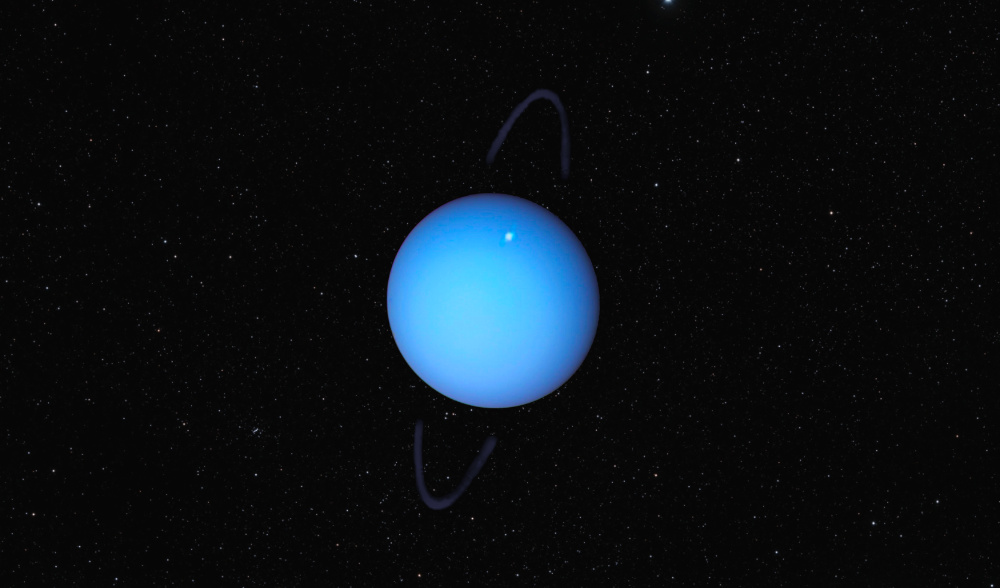| November Challenge: Uranus Naked-eye (2020-11-01) ⬅︎ |
 |
We think of Uranus as the Elusive Giant because it can be seen without optical aid but only when the
conditions are right and then just barely. This dim, distant world is well-positioned now
and is a worthy, stargazing challenge.
Quick question: what was the most distant planet that people from the past knew about? If you said
Saturn,
then you'd be right. Even though it is about a billion miles from the sun, it is a bright, easy naked-eye target and all
cultures saw it as a planet -- an object that wanders across the sky in a periodic way.
Uranus, the planet after Saturn, wasn't known to our ancestors. At twice the distance of Saturn, it is far dimmer
and
moves far more slowly
in our sky. No doubt our ancestors saw it on occasion but they never identified it as planet.
This changed in 1781 when William Herschel watched this dim planet though his telescope outside London,
England. At first he
thought it was a comet, but in time he and others realized that it was a planet. Herschel named it Georgium
Sidus in honor of King George III who employed him, but this name was not popular and was changed to
Uranus in keeping with other planet names.
For stargazers using a binocular or telescope, Uranus is a fairly easy target. But naked-eye, Uranus is challenging.
At
its brightest in our sky, it is at magnitude +5.7 which is close to the
edge of what the human eye can see (about +6.0). It requires dark, moonless skies.
If you'd like to take on this challenge, here are some suggestions to maximize your chances of success:
 |
View when Uranus is highest in the sky -- when it crosses the meridian, due south. Use the
Monthly view of the Uranus Star Guide Tool to learn when it is at its highest point each night. You'll find that Uranus
crosses the meridian at 56° above the horizon at 11:41pm at the start of November and 9:43pm by the end of the
month.
|
 |
View on a moonless night away from light pollution. Use the Daily Forecast feature of the Starry Hill
Star Guide to learn which nights are
best. You'll find that the moon will be out of the way between November 8 and 20 at the meridian-crossing times.
|
Naked-eye view: use Mars and the Pleiades to help find Uranus since Uranus appears halfway between
them in our
sky this month. This is 22° -- about two fist-widths -- between Uranus and Mars and between Uranus and the
Pleiades. Uranus is in the constellation Aries.
Binocular view: use a binocular to first find Uranus. Compared to a star, it will appear a bit larger and
'fuzzier'. You
may see a slightly blue-green cast. With Uranus centered in a typical field of view of a binocular (6°), you should
see only
two stars of similar brightness. Below Uranus, find slightly brighter Xi Arietis (+5.5). Above Uranus, find 19 Arietis
which will appear at about the same brightness as Uranus (+5.7). Keep in mind that Uranus will be moving slowly
east (from right to left) through this view.
Once you've confirmed that you've found Uranus, lower the binocular and try to spot it naked-eye at the
same
location. On subsequent evenings, try to spot Uranus first naked-eye without any optical aid. Then use a
binocular to confirm your sighting.
If you are successful, then
you will have accomplished what very few stargazers have done. Keep in mind that Uranus moves very slowly in
our sky. By 2025, it will have moved eastward along the ecliptic to a point just below the Pleiades (see above). So,
once you
have learned how to find it this year, Uranus will be a familiar target for many years to come.
Good luck!
|
| |



